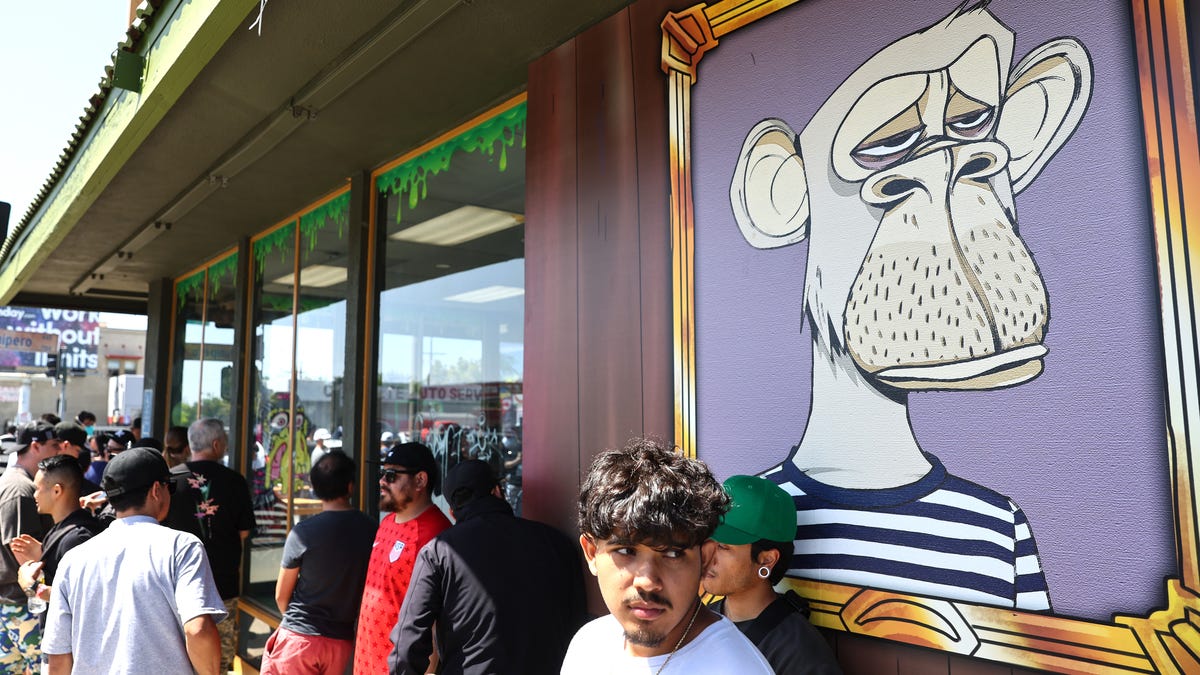The once-booming non-fungible token (NFT) market is down by nearly every trackable metric. In sectors from art to gaming, trading volume for NFTs across all sectors has plunged about 90% since this time last year, according to data from the crypto websites The Block and CryptoSlam.
That’s a steep drop for an NFT industry that recorded several $1 billion trading weeks in the last few years as traders, speculators, and collectors vied to obtain coveted digital collectibles to turn a profit, gain status, and show off. Since the start of September, NFT trading volumes have averaged $35 million per week. Amid a weak stock market and high inflation, the market has shown no signs of rebounding.
What the industry is calling a crypto “winter” has settled on the once red-hot market that saw the rise of Yuga Labs, Dapper Labs, and OpenSea, several billion-dollar companies. The NFT market’s struggles are yet another sign that blockchain-based digital collectibles are bull-market luxuries rather than reliable, inflation-resistant investments.
NFTs are down across the board. In the NFT gaming industry, known for online game titles such as Axie Infinity and Gods Unchained, sales are down 93% year-over-year. NFTs are used in games to confer ownership of different playable characters or usable items.
In the art and collectibles category, including popular NFT collections such as CryptoPunks and Bored Ape Yacht Club, trading volumes are down more than 80% compared to one year ago, and off 94% from their peak this spring.
Many of those art NFTs are being bought and sold on OpenSea, the most prominent peer-to-peer marketplace. Trading volume on the platform has plummeted from around $3 billion in September 2021 to $350 million in September 2022, an 88% drop, according to third-party data from The Block.
In a recent blog post about the downturn, OpenSea CEO Devin Finzer urged patience with the emerging technology and wrote that the “long-term promise and trajectory of NFTs” is one where the “addressable market…is basically every single person on the planet.” (Finzer’s vision is a long way away: Half of Americans still haven’t even heard of NFTs, according to a recent Pew study).
Venture capitalist Li Jin also argues today’s NFT crash, while driven by macroeconomic headwinds, will lead to a better and more utilitarian NFT market in the future. “To me, the downturn also highlights the major opportunity that I see around NFTs, which is to take them from assets that people collect and speculate on, to assets that people actually use,” she wrote in an email.
Jin, a general partner with the investment firms Atelier Ventures and Variant, predicted NFTs will have more popular use cases in the future such as representing one’s digital identity (so-called “soulbound” NFTs), ensuring voting rights or membership in decentralized communities, and tracking in-game assets.
In the meantime, says Mahesh Vellanki, managing partner at the crypto venture firm SuperLayer, this “major correction” will wipe out many NFT projects before setting the stage for an industry recovery, especially on newer blockchains such as Solana. “The bigger story here is not so much that NFTs are down but that the market for them is changing,” Vellanki wrote in an email. “We’re seeing more competition and in turn more creative projects getting built on a wider variety of chains.
Our free, fast, and fun briefing on the global economy, delivered every weekday morning.

